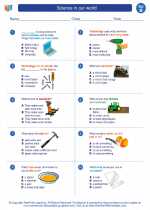Endoplasmic Reticulum
The endoplasmic reticulum (ER) is a vital organelle found in eukaryotic cells. It plays a crucial role in the synthesis, folding, modification, and transport of proteins and lipids within the cell. The ER is a network of membranes that extends throughout the cytoplasm and is connected to the nuclear envelope.
Types of Endoplasmic Reticulum
There are two main types of endoplasmic reticulum:
- Rough Endoplasmic Reticulum (RER): The RER is covered in ribosomes on its surface, giving it a "rough" appearance. It is primarily involved in protein synthesis and plays a crucial role in the folding and processing of newly synthesized proteins.
- Smooth Endoplasmic Reticulum (SER): The SER lacks ribosomes and is involved in lipid synthesis, metabolism, and detoxification of drugs and toxic substances.
Functions of Endoplasmic Reticulum
The endoplasmic reticulum performs several essential functions:
- Protein Synthesis: The RER is involved in the synthesis of proteins, while the SER plays a role in the synthesis of lipids and steroids.
- Protein Folding and Modification: Newly synthesized proteins undergo folding and modification within the ER lumen to attain their functional conformation.
- Calcium Storage: The ER serves as a calcium ion reservoir, which plays a crucial role in signaling and muscle contraction.
- Lipid Metabolism: The SER is involved in lipid metabolism, including the synthesis of phospholipids and cholesterol.
- Detoxification: The SER helps in detoxifying drugs and harmful substances by enzymatic reactions.
Study Guide
To understand the endoplasmic reticulum thoroughly, consider the following study guide:
- Describe the structure of the endoplasmic reticulum and its relationship with the nucleus.
- Explain the differences between rough endoplasmic reticulum and smooth endoplasmic reticulum, including their functions and characteristics.
- Discuss the role of the endoplasmic reticulum in protein synthesis, folding, and modification.
- Elaborate on the significance of the endoplasmic reticulum in lipid metabolism and detoxification processes.
- Illustrate the concept of calcium storage and its importance in cellular function within the endoplasmic reticulum.
Understanding the endoplasmic reticulum is crucial for comprehending the intricate processes that occur within eukaryotic cells, and its diverse functions make it a fascinating organelle to study.
.◂Science Worksheets and Study Guides Second Grade. Science in our world
Study Guide Science in our world
Science in our world  Worksheet/Answer key
Worksheet/Answer key Science in our world
Science in our world  Worksheet/Answer key
Worksheet/Answer key Science in our world
Science in our world  Worksheet/Answer key
Worksheet/Answer key Science in our world
Science in our world  Vocabulary/Answer key
Vocabulary/Answer key Science in our world
Science in our world 

 Worksheet/Answer key
Worksheet/Answer key
 Worksheet/Answer key
Worksheet/Answer key
 Worksheet/Answer key
Worksheet/Answer key
 Vocabulary/Answer key
Vocabulary/Answer key

The resources above cover the following skills:
LIFE SCIENCE (NGSS)
Biological Evolution: Unity and Diversity
Students who demonstrate understanding can:
Make observations of plants and animals to compare the diversity of life in different habitats[Clarification Statement: Emphasis is on the diversity of living things in each of a variety of different habitats.] [Assessment Boundary: Assessment does not include specific animal and plant names in specific habitats.]